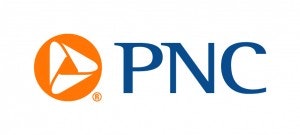Given that you clicked on this article, it seems safe to assume you either own shares of PNC Financial Services (NYSE:PNC) or are considering buying them in the near future. If so, then you’ve come to the right place, as the table below reveals the nine most critical numbers that investors need to know about PNC Financial Services (NYSE:PNC) before deciding whether to buy, sell, or hold its stock.

But before getting to that, a brief introduction is in order. Tracing its roots to the Pittsburgh Trust and Savings Company, which was founded in 1852, PNC has since transformed into one of the nation’s largest regional banks. Following its controversial acquisition of Cleveland-based National City Bank in 2008, PNC operates more than 2,900 branches across 19 states and the District of Columbia. And in addition to the $305 billion of assets on its balance sheet, it has approximately $112 billion in assets under management and $224 billion of assets under administration.

From a shareholder’s perspective, PNC Financial Services (NYSE:PNC)’s biggest strengths are its net interest margin, reasonable leverage, and healthy fee-based income. At 3.94%, its net interest margin exceeds the industry average by an impressive 24 basis points. It does so, moreover, with less leverage than most of its peers. At the end of last year, its tier 1 capital was leveraged 9.6 times relative to its average total assets compared to the industry average of 10.1 times. Finally, and this is an oft-overlooked component of good banks, its non-interest income accounted for a considerable 40% of total revenue — that is, 12 percentage points more than the industry.
Alternatively, PNC Financial Services (NYSE:PNC)’s two biggest weaknesses are its efficiency ratio and return on equity. The efficiency ratio is a measure of a bank’s cost structure; a higher ratio reflects a less efficient operation, and vice versa. In this case, PNC Financial Services (NYSE:PNC)’s ratio comes in at 73% compared to the industry’s 69%. Suffice it to say, this is an area of opportunity for PNC Financial Services (NYSE:PNC). Given this and the less aggressive use of leverage, it’s little surprise that PNC’s return on equity underperforms the average, at 7.6% and 8.2%, respectively. And it’s likely for this reason, in sum, that PNC trades for a comparatively reasonable 1.37 times tangible book.
The article 9 Critical Numbers About PNC Financial originally appeared on Fool.com.
John Maxfield has no position in any stocks mentioned. The Motley Fool owns shares of PNC Financial Services (NYSE:PNC).
Copyright © 1995 – 2013 The Motley Fool, LLC. All rights reserved. The Motley Fool has a disclosure policy.
